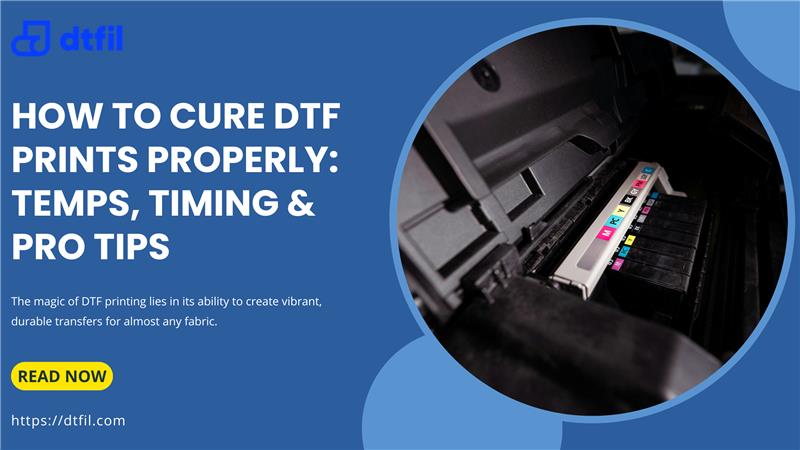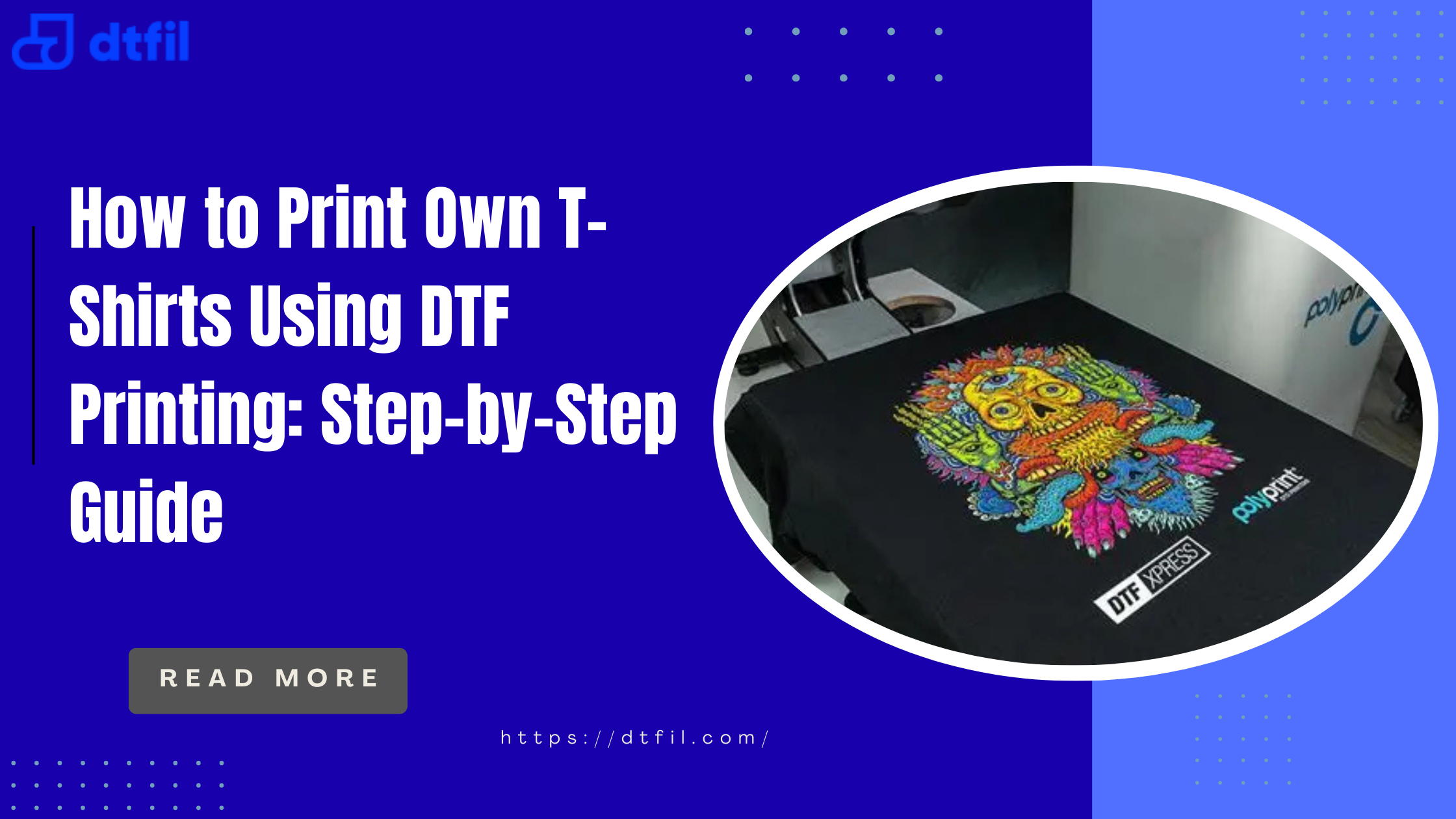Direct to Film machines are super important in the printing industry. They help in transferring designs onto film quickly and smoothly. But just like any other machine, they need proper care to keep working well for a long time.
In this blog, we're going to talk about the best ways to take care of a Direct to Film machine. We'll cover things like how to prevent issues, what to do if something goes wrong, how to make sure it's working just right, how to make the workflow smoother, and more. So, let's dive in and learn how to keep our Direct to Film machines in top shape!
Introduction to Direct to Film Machines
Direct to Film machines are like special tools used in printing. They help put designs straight onto film. Instead of doing things the old way, which takes more steps, these machines make things quicker and cheaper. People use them a lot in different areas like screen printing, graphic design, and printing on clothes.
Components of a Direct to Film Machine
A Direct to Film machine is made up of different parts, and each one is important for printing. There's the exposure unit, which puts the design onto the film. Then, there's the film feeder, which helps the film move smoothly through the machine. The vacuum table keeps the film steady while it's being exposed, so the results are accurate. Lastly, the control panel lets operators change settings and keep an eye on how the printing is going as it happens.
Preventive Maintenance Checklist
Taking good care of your Direct to Film machine is super important if you want it to last a long time and work its best. To make sure it stays in top shape, you need to do regular maintenance. This means sticking to a checklist of things to do to keep it clean, well-lubricated, and free from any problems.
Here's what you should do:
- Clean the lenses and mirrors in the exposure unit.
- Make sure all the moving parts are well-lubricated.
- Look closely at all the parts for any signs of wear and tear.
Troubleshooting Common Issues
Even though Direct to Film machines are taken care of regularly, they can still have problems now and then. These problems might include uneven exposure, film getting stuck, or calibration errors. To fix these problems properly, the people operating the machines need to know how to figure out what's causing the issue and what steps to take to fix it. This could mean changing settings, putting in new parts that are worn out, or adjusting how the machine is calibrated.

Calibration and Adjustment Techniques
Making sure a Direct to Film machine works right is super important. To get accurate and steady results, we need to calibrate it properly. This means tweaking things like how long the light shines, how tight the film is pulled, and how much suction is applied, so they fit exactly what each job needs. We should check these settings regularly to make sure the machine works best and doesn't mess up when we're printing.
Also Read: How DTF Transfer Is Different From Other Transfer Methods?
Replacing Consumable Parts
As time goes by, some bits of a Direct to Film machine might get worn out and need changing. These parts include the bulbs in the exposure unit, the seals on the vacuum table, and the rollers that feed the film. It's important to know how long these parts last and to replace them on time to avoid the machine being out of action and to keep it working efficiently.
Optimizing Workflow
Making workflow processes smoother can really help make a Direct to Film operation work better. This could mean using batch printing methods, making film layouts better, and buying automation tools. When you reduce the time wasted and make sure you're getting as much done as possible, it helps your business be more productive and make more money.
Cost-Effective Maintenance Strategies
Making sure our Direct to Film equipment stays in tip-top shape without breaking the bank is super important. We need to find smart ways to balance how much we spend on maintenance with how well our machines work. One way to do this is by coming up with maintenance plans that focus on preventing problems before they even happen. Sometimes it might make sense to hire outside experts to handle some of the maintenance tasks for us. By keeping a close eye on our maintenance costs, we can make sure our machines keep running smoothly, avoid long periods of downtime, and make them last longer.
Safety Measures
Making sure that the workplace is safe when using and looking after Direct to Film machines is super important. Getting trained well in how to use the machines safely and following all the safety rules, like wearing the right protective gear, can stop accidents and injuries from happening. It's also crucial to regularly check for any safety issues and make sure everything follows the rules set by the industry to keep the workplace safe.
Documentation and Record-Keeping
It's super important to keep good records of all the maintenance stuff you do on a Direct to Film machine. These records should have things like when you did the maintenance, what exactly you did, and if you ran into any problems while doing it. By looking at all this info, you can see patterns and figure out places where you might need to make things better. And that means your machine will work more reliably and do a better job overall.
Also Read: Common Industries and Applications for DTF transfer
Future Trends and Innovations
The printing industry keeps changing, especially with new technology making Direct to Film machines better. These machines are getting more precise and faster, and they can do more things automatically. In the future, we can expect even more improvements like better connections to other machines. Keeping up with these changes and using new ideas can help printing businesses do better in a tough market.
Conclusion
Keeping a Direct to Film machine up and running smoothly needs a mix of taking care of it before issues arise, being good at fixing problems, and always looking for ways to make things better. By doing things the right way and getting the tools we need, companies can keep the machine working as much as possible, reduce the times it's not working, and make sure the stuff it produces is always good quality.
FAQs
What is the life expectancy of a DTF transfer?
The life expectancy of a DTF transfer varies depending on factors such as material quality and usage. However, with proper care, transfers can last for years.
Should I leave my DTF printer on all the time?
Leaving a DTF printer on all the time is not recommended as it can lead to unnecessary wear and tear. It's advisable to turn off the printer when not in use.
How do you preserve DTF prints?
Preserving DTF prints involves storing them in a cool, dry place away from direct sunlight and moisture.
How hard is it to maintain a DTF printer?
Maintaining a DTF printer is not overly difficult but requires consistency and attention to detail. Following a regular maintenance schedule and implementing best practices can simplify the process.








